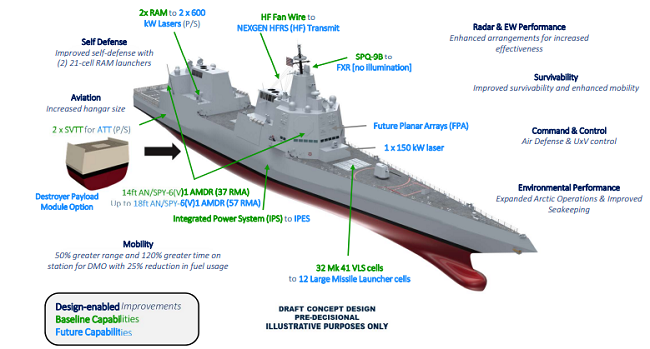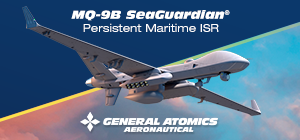
During the 37th National Symposium, organised by the Surface Navy Association and held in Washington D.C. from 14 to 16 January, some news emerged and several aspects of the DDG(X) - Next-Generation Guided-Missile Destroyer - programme were confirmed, aimed at the design and development of the new class of DDGs destined to strengthen the US Navy fleet.
The DDG(X) development project is part of the broader context of the Large Surface Combatant programme: the new generation units are specifically intended to replace the 22 TICONDEROGA class cruisers and 28 BURKE Flight I/II class destroyers in service with the US Navy.
During the conference, Rear Admiral Bill Daly, Director of the US Navy Surface Warfare Division, emphasised how one of the fundamental requirements underlying the DDG(X) programme is to always allow for future growth of the units, thanks to the provision of significant margins in terms of SWAP-C (Size, Weight, Power - Cooling).
For example, as regards sensors, the radar will be an upgraded version of the AN/SPY-6(V)1 AMDR, already in use on the DDG-51 Flight III. Initially, the 37-element-per-antenna (RMA) 14-foot (4.26 m) radar will be installed, which will later be replaced by a larger version with 57 RMA 18-foot (5.48 m).
The same concept is also applied to the armament: the initial armament will be similar to that of the DDG-51 Flight III, and will comprise 96 Mk-41 VLS cells, with the added provision of being able to replace the 32 forward cells with 12 larger cells (G-VLS, i.e. Growth), capable of launching hypersonic missiles such as the CPS (Conventional Prompt Strike).
A particularly relevant aspect that emerged during the Symposium concerns the integration of directed energy weapons on board DDG(X). Rear Admiral Daly highlighted the strategic importance of the combination of conventional armaments and directed energy weapons, describing it as an essential development to face future operational challenges, particularly in the Indo-Pacific context.
A further distinctive element of the DDG(X) concerns the advanced technological solutions adopted to increase its survivability and operational efficiency. The ship will feature a significant reduction in infrared, acoustic and electromagnetic signatures, thus improving its ability to evade threats and ensuring greater survivability in hostile environments. In addition, thanks to a highly innovative propulsion system (Integrated Power System, IPS), the DDG(X) will have greater operational autonomy and reduced fuel consumption.
(Render: US Navy)








.png)
